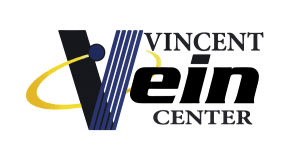6 Common Types of Vein Diseases

Understanding the Venous System
Learning about our veins and how they work is important to understanding common types of vein diseases. There is a family in which veins work. The three main sets of vessels are arteries, lymphatics, and veins. These three sets of vessels are a part of our main circulatory system, and each has an important job.
The main job of arteries is to bring oxygen from our heart to our tissue. During this process, our arteries and veins leak small amounts of protein and fluid. The lymphatic vessels get those rich proteins and fluids back into the blood circulation and provide nutrition through our bodies. The third vessel, veins, brings oxygen-depleted blood from the organs and tissues and circulates it to the heart and lungs. This is where it is recycled or re-oxygenated. The re-oxygenated process helps blood return to the heart and enables muscle contraction in the arms and legs. Because the venous system is low pressure, being physically active is important. Regular exercise helps prevent blood from pooling and getting blood flowing.
Thrombosis
There are two forms of thrombosis vein diseases, Superficial Thrombophlebitis, and deep vein thrombosis. Both are forms of blood clots that occur in the legs due to prolonged immobility, inherited or genetic traits, pregnancy, contraceptives, and cancer.
Superficial Thrombophlebitis
Superficial Thrombophlebitis involves blood clots forming under the skin, making them visible to the eye. These blood clots can also be deep within the limb. Signs of superficial veins are a red streak along the affected veins. Usually, it is also accompanied by inflammation of the leg (phlebitis). Common feelings in the leg are abnormally warm and tender feelings and swelling caused by the settling of varicose veins.
Deep Vein Thrombosis
Deep vein diseases can be challenging to diagnose because of how hard the symptoms are to locate in patients. Only 50% of affected people show signs of these vein diseases. For those who show the signs, symptoms include painful walking on the ball of the foot, leg swelling, pressure, or fullness. Primary deep vein thrombosis is caused by inherited genetic clotting. Deep vein thrombosis is caused by a lack of mobility after a life-changing event such as surgery or cancer.
Venous Insufficiency
This disease is caused by blood clots, inherited abnormalities within the vein wall, and poor or inadequate drainage from the vein. There are two main types of insufficiency in veins, including superficial venous insufficiency and chronic venous insufficiency. Superficial venous insufficiency is the most common in vein diseases.
Superficial Venous Insufficiency
Superficial venous insufficiency, more popularly known as varicose veins, are dilated or enlarged veins that lie just below the skin. Most vein diseases are caused by blood clots. Sometimes blood clots may not be the culprit in varicose veins. Most causes are due to a structural abnormality of the vein wall or valve, causing increased pressure and blood backflow. This causes pools or pockets of blood in the veins. Some causes of varicose veins include obesity, pregnancy, prolonged standing, sedentary lifestyles, and hereditary traits. If varicose veins are left untreated, skin ulcers, infections, extreme blood clots, and spontaneous bleeding will occur. Common symptoms include burning, aching, or itchiness in the veins.
Chronic Venous Insufficiency
Chronic venous insufficiency is caused when the drainage from veins within the limbs is inadequate over long periods. This vein disease occurs due to obstructed blood flow between the limbs and the heart. Abnormally functioning valves cause the backward flow of blood into the veins. When the valves in the vein fail, excess backflow spreads into the veins. Common signs of chronic venous insufficiency are leg swelling and pain. Other symptoms include darkened patches of skin and coarse skin texture caused by deposits of destroyed red blood cells that pile up over time.
Treatment for Vein Diseases
If you or a loved one are suffering from any of these common types of vein diseases, do not worry. Most common vein diseases are easy to treat and rarely life-threatening. Contact the Vincent Vein Center of Grand Junction, Colorado, to find out more about vein diseases. Schedule an appointment with one of our physicians to improve the quality of your life.
